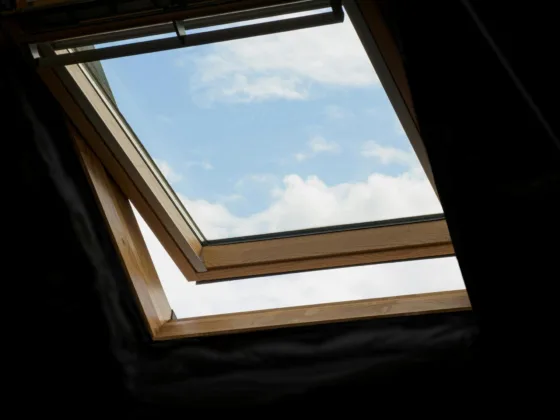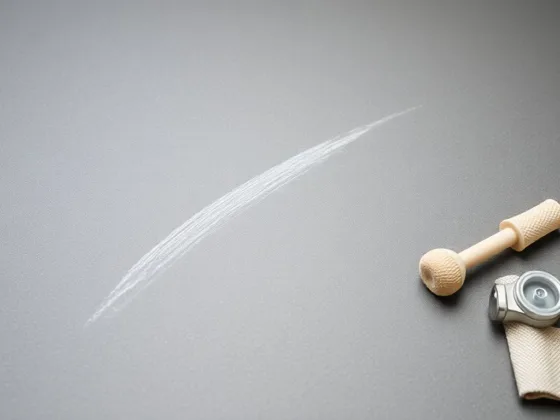Table of Contents Show
Introduction
Chipped paint is a common issue that many homeowners face, but repairing it is often a smarter choice than completely stripping or sanding down to bare wood. This approach not only saves time and money but also protects the underlying surface from potential damage. By quickly addressing minor chips, you can maintain the overall beauty and integrity of your space.
This post will guide you through the practical steps of repairing chipped paint, emphasizing the benefits of a localized fix over more invasive methods and providing essential tips for a seamless finish.
Necessary Tools and Materials
When starting a task like fixing chipped paint, having the right tools and materials is important to ensure a smooth and professional finish.
Below is a list of essentials that you’ll need for this project, along with some tips on choosing the best items.
1. Paint Brushes
High-quality paint brushes are essential for applying paint smoothly and evenly.
- Choose brushes with synthetic bristles for water-based paints and natural bristles for oil-based paints.
- Select brush sizes that match the areas you are repairing—smaller brushes for detailed areas and larger ones for broader surfaces.
2. Painter’s Tape
Using painter’s tape helps create crisp, clean lines and protects adjacent areas from unintended paint splashes.
- Choose a tape with the appropriate adhesion level suited to the surface you’re working on to avoid peeling away any existing paint.
3. Sandpaper
Sandpaper is necessary for smoothing out the chipped areas and preparing the surface for primer and paint.
- Start with coarse sandpaper (80-120 grit) for initial smoothing and finish with fine sandpaper (220-320 grit) for a polished surface.
4. Primer
Applying primer is important for durable paint adhesion, ensuring the repair blends in seamlessly with the rest of the wall.
- Select a primer suitable for the type of paint you will be using, whether oil-based or latex and ensure it’s compatible with the wall material.
5. Matching Paint
Finding the exact match to your original paint color is essential for a flawless repair.
- Keep the original paint can for reference or take a sample to a paint store for a precise match.
- If the paint has aged, slight adjustments in shade may be required.
6. Putty Knife
A putty knife is essential for applying filler to deep chips or cracks.
- Choose a flexible knife for spreading and a stiffer knife for scraping old paint and smoothing down fillers.
7. Filler or Spackling Compound
For fixing deeper chips, a filler or spackling compound is necessary.
- Select a product that dries hard and can be sanded smooth to ensure the repaired area is undetectable once painted.
Making sure each item is suited to your project’s specific needs will help achieve a perfect, seamless finish.
Preparing the Surface
Proper surface preparation is critical for successfully repairing chipped paint. This stage begins with thoroughly cleaning the affected area to remove dust, dirt, and debris.
Cleaning the Area
- Start with a soft cloth or a gentle brush to clear loose particles.
- For stubborn grime, use a damp cloth with mild detergent, ensuring all remnants of grease or contaminants are eradicated.
- Subsequently, let the area dry completely before moving on to the next step.
Sanding the Edges
Once the surface is clean and dry, the next step involves sanding the edges of the chipped paint.
- Using fine-grit sandpaper, lightly sand the perimeter of the chipped area.
- This smooths out any rough edges and helps the new paint blend seamlessly with the existing surface.
- Be cautious to sand gently; overly vigorous sanding can exacerbate the damage.
- After sanding, wipe down the area with a tack cloth to remove any sanding residue.
Importance of Dryness and Cleanliness
Ensuring the surface remains dry and dust-free is essential before you proceed to apply primer. Any residual moisture or particles can affect paint adherence, leading to further chipping or peeling in the future.
Priming for Better Bonding
Priming the area creates a uniform base for the new paint, promoting better bonding and an even finish.
Skipping or rushing through any of these steps can compromise the integrity of the repair. When you take the time to clean, sand, and dry the area properly, it sets a solid foundation for repairing chipped paint. Thus, attention to detail during this phase significantly enhances the durability and aesthetics of the final result.
Applying Primer to the Chipped Area
When it comes to repairing chipped paint, applying primer is a crucial step that ensures the longevity and durability of the paint job. Priming the exposed wood or old paint creates a smooth, uniform surface that the paint can adhere to, preventing further chipping and peeling.
Selecting the Right Type of Primer
Selecting the right type of primer is essential:
- For wood surfaces, oil-based or shellac primers are recommended because of their excellent sealing properties and ability to block stains.
- For areas with old paint, a latex primer can be more suitable due to its quick drying time and ease of cleanup.
Also read: Polycrylic vs. Polyurethane: Which Is Better for Your Wood Project?
Preparing the Chipped Area
Begin by ensuring the chipped area is clean and free from dust and debris. Use a clean, dry cloth to wipe down the surface, and if necessary, gently sand the edges of the chipped paint to smooth out any rough spots.
Applying the Primer
Next, apply the primer with a high-quality brush or roller, ensuring an even coat. Be mindful of coverage; the goal is to ensure that the primer penetrates and bonds securely with the underlying material without excess buildup.
Achieving an Even Coat
Achieving an even coat is essential for the success of the painting process. Work methodically, starting from the bottom and moving upward, following the grain of the wood or the natural contours of the surface. Angle the brush slightly to minimize streaks and ensure uniform coverage.
Considering Drying Time
An important consideration is the drying time: allowing the primer to dry thoroughly is paramount. Most primers require at least 12-24 hours to cure completely but always refer to the manufacturer’s guidelines for the specific drying time.
Do not rush this stage, as the primer’s cure time significantly impacts the final result.
Inspecting for Evenness
Once the primer has dried fully, inspect the area to ensure there are no uneven spots or missed sections. Proper priming is the foundation of a durable and aesthetically pleasing paint job, setting the stage for the effective repair of chipped paint.
Filling and Smoothing
Repairing chipped paint involves a critical step of filling and smoothing the damaged area to ensure a seamless blend with the existing surface. Here’s how to do it effectively:
1. Choose the Right Filler
Begin by selecting a suitable patching compound or wood filler appropriate for the material and severity of the chip:
- Patching compounds are effective for smaller chips and indentations.
- Wood fillers are preferable for larger defects, particularly on wooden surfaces.
2. Apply the Filler
To apply the filler, use a putty knife and scoop a small amount of the chosen compound:
- Firmly press the filler into the chipped area, ensuring the entirety of the chip is adequately covered.
- Spread the filler evenly across the surface, using the putty knife to level it out with gentle, controlled strokes.
- Removing excess compound immediately is crucial; this will minimize the amount of sanding required later.
3. Allow to Dry
Once the filler is applied, allow it to dry according to the manufacturer’s instructions—typically ranging from one to several hours.
4. Sanding for Smoothness
After the filler has completely dried, it’s time to sand the area to achieve a smooth, even surface:
- For optimal results, begin with medium-grit sandpaper (around 120-grit) to eliminate rough edges.
- Transition to finer grit (220-grit) for a polished finish.
While sanding, it is essential to wear a dust mask to protect against inhaling fine particles:
- Sand gently in a circular motion.
- Consistently check to ensure that the filled area becomes flush with the surrounding paint.
- Taking care not to over-sand will prevent creating new indentations, ensuring the surface remains level.
5. Clean Up
After sanding, clean the area with a damp cloth to remove any dust or debris. This step ensures the surface is primed and ready for the repainting process, completing the repair of the chipped paint effectively.
Reapplying Paint
Once you have successfully repaired the chipped paint, it is crucial to reapply paint to the affected area with care and precision. The first step is to ensure the color matches the existing paint. This can be achieved by taking a paint chip to a local hardware store for color matching or using leftover paint from the original application.
Tips for Reapplying Paint
- Use Thin Coats: When reapplying paint, it is advisable to apply multiple thin coats rather than one thick coat. Thin coats ensure an even finish and help in blending the new paint with the old. This method reduces the likelihood of brush marks and drips.
- Choose the Right Tools: Use a high-quality paintbrush or roller designed for the type of paint you’re using—whether it is latex or oil-based paint.
Techniques for Blending
- Feathering Technique: Start by lightly feathering out the paint from the center of the repaired area toward the edges. This technique helps blend the new paint with the old and makes the repair less noticeable.
- Edge Control: Pay careful attention to the edges to avoid any visible lines or ridges.
Drying Time Matters
After applying the first thin coat of paint, it is essential to allow it to dry completely before applying the next layer. Drying times can vary depending on the type of paint and environmental conditions, but a general rule of thumb is to wait at least two hours between coats. Rushing this step can cause the paint to peel or become uneven.
Achieving a Seamless Repair
Continue applying thin coats of paint and allowing each one to dry thoroughly until the repaired area matches the surrounding surface. Typically, two to three coats should suffice, but more may be necessary for darker colors or heavily chipped areas.
Attention to detail and patience are key to ensuring that the previously chipped area becomes virtually indistinguishable from the rest of the painted surface.
Also read: How to Paint Over Stained and Varnished Wood Paneling
Finishing Touches and Clean-Up
Once the primary work of repairing chipped paint is completed, the finishing touches are crucial to achieving a flawless result.
Inspect and Smooth Out Imperfections
After the paint has dried, inspect the area for any minor imperfections such as uneven spots or small depressions. Utilize fine-grit sandpaper to lightly smooth out any irregularities, ensuring a seamless transition between the patched area and the surrounding surfaces. If necessary, apply a thin coat of paint over the sanded spots to maintain an even color distribution.
Remove Painter’s Tape Carefully
Next, carefully remove any painter’s tape that was used to protect trim, windows, or adjacent walls. It is best to do this while the paint is still slightly tacky, as waiting until it is fully dry can result in peeling or uneven edges. Slowly and steadily peel the tape back on itself at a 45-degree angle to minimize the risk of damaging your fresh paint job.
Clean Up the Workspace
Cleaning up the workspace is the final step. Gather all materials such as brushes, rollers, and trays, and clean them promptly to prevent paint residue from hardening. Thoroughly wash these tools with warm, soapy water if using latex paint, or mineral spirits for oil-based paints.
Wipe down any surfaces that may have collected dust or paint splatters during the repair process. Proper disposal of any leftover paint or hazardous materials should be conducted under local regulations to ensure environmental safety.
Maintain Regular Care
To maintain the appearance of the repaired area, regular care is essential.
- Dust the surface gently with a soft cloth to prevent dirt buildup.
- Avoid using harsh chemicals that may degrade the paint, opting instead for mild cleaners.
- Touch up any new chips or scratches promptly to keep the surface looking fresh.
With diligent maintenance, the repaired paintwork can retain its aesthetic and protective qualities for years to come.
Common Mistakes to Avoid
Repairing chipped paint can be straightforward if approached correctly, but homeowners often fall into common pitfalls that can lead to unsatisfactory results. Here are some mistakes to avoid:
Inadequate Surface Preparation
One prevalent mistake is inadequate surface preparation. Skipping crucial steps such as cleaning, sanding, and priming can cause the new paint to adhere poorly, leading to further chipping and peeling. To avoid this:
- Ensure that the damaged area is thoroughly cleaned to remove dirt and grease.
- Sand the edges of the chipped paint to smooth out any roughness.
- Apply a suitable primer to create a solid foundation for the paint.
Choosing the Wrong Type of Paint or Primer
Another frequent error is choosing the wrong type of paint or primer. Different surfaces require specific types of paint and primer for optimal adhesion and durability. For instance, using water-based paint on a previously oil-based painted surface without the correct primer can result in peeling. Always match the paint and primer to the surface and previous coatings to ensure compatibility and longevity of the repair.
Rushing Through Drying Times
Timing is also crucial in the paint repair process. Impatience can lead individuals to rush through the project, neglecting the necessary drying time between coats. This haste can cause the paint to bubble and peel, wasting effort and materials. Adhere to the manufacturer’s recommended drying times to ensure each layer of paint fully cures, creating a robust and aesthetically pleasing finish.
Troubleshooting Issues
During the repair process, unexpected issues such as bubbles, streaks, or uneven coverage may arise. Troubleshoot these problems by lightly sanding the affected areas and reapplying the paint as needed, following the correct preparation and drying procedures. Consistent attention to detail and adherence to best practices can transform a potentially frustrating experience into a successful paint repair project.
Frequently Asked Questions (FAQs)
Yes, chipped paint can be repaired. You can use wood putty or latex filler to fill in the chips and create a smooth surface before repainting.
In some cases, painting over chipped paint is sufficient if the edges are not actively peeling and appearance is not a priority. However, consider filling in the chips with spackling compound or wood filler for a flawless finish before repainting.
The size of the paint chip that can be repaired depends on the method used. Spackling paste or wood filler works well for small areas, while joint compound is better for larger low or shallow spots. If the paint has chipped off a wooden surface, use a wood filler
If multiple chips exist in several places, it might be better to repaint the entire wall. Signs that it’s time to repaint include faded or peeling paint, stains that won’t come off, and changes in color preference.
First, do a visual inspection to identify all the chips. Then, use spackling compound or joint compound to fill in the chips, creating an even surface. Finally, repaint the repaired areas for a seamless finish.










